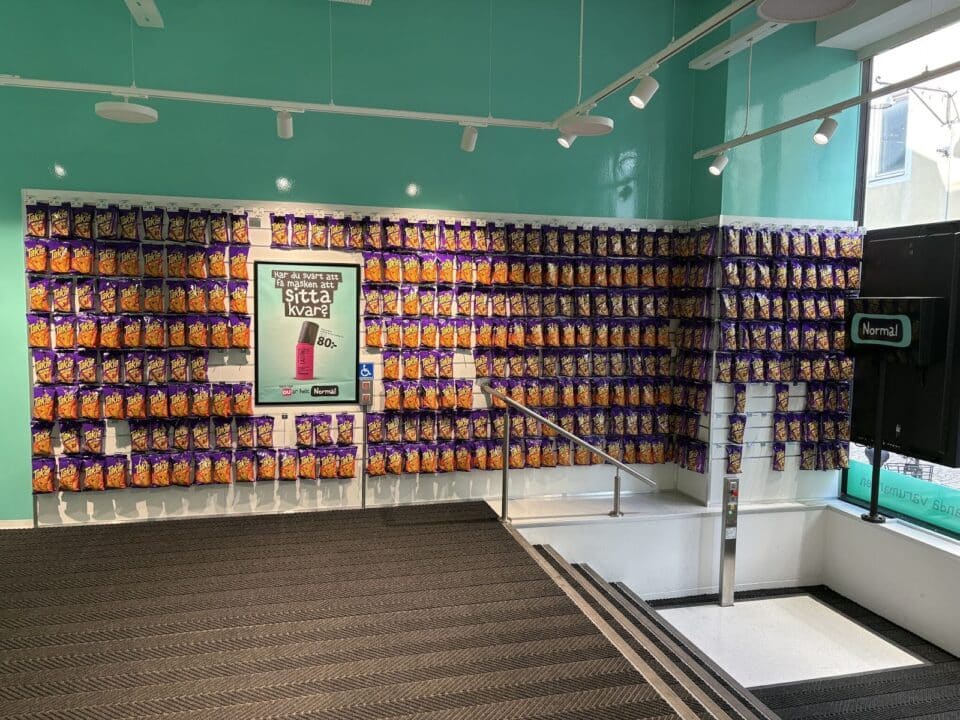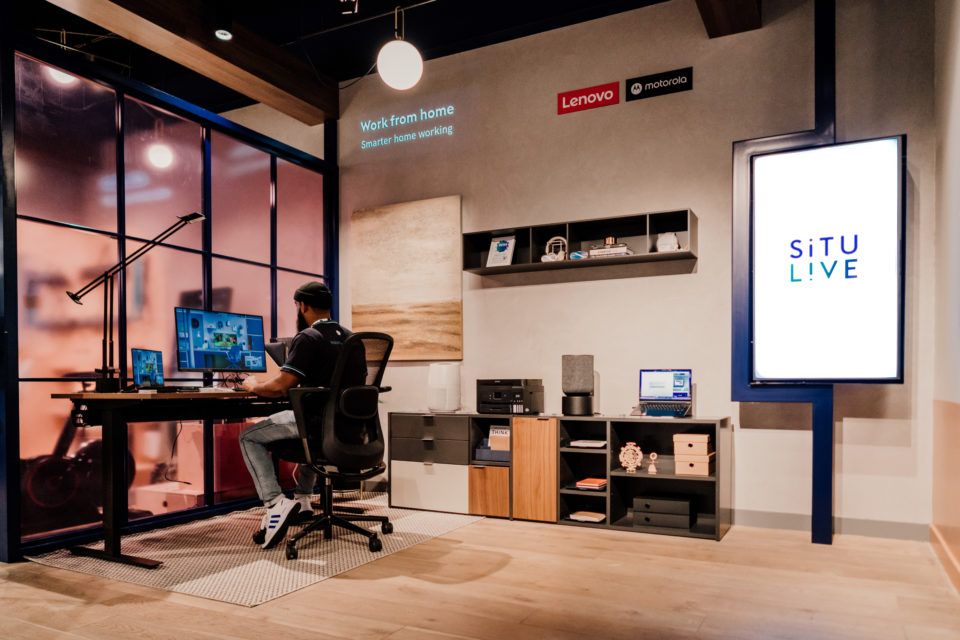The Best of New York Retail Trends – Part 1
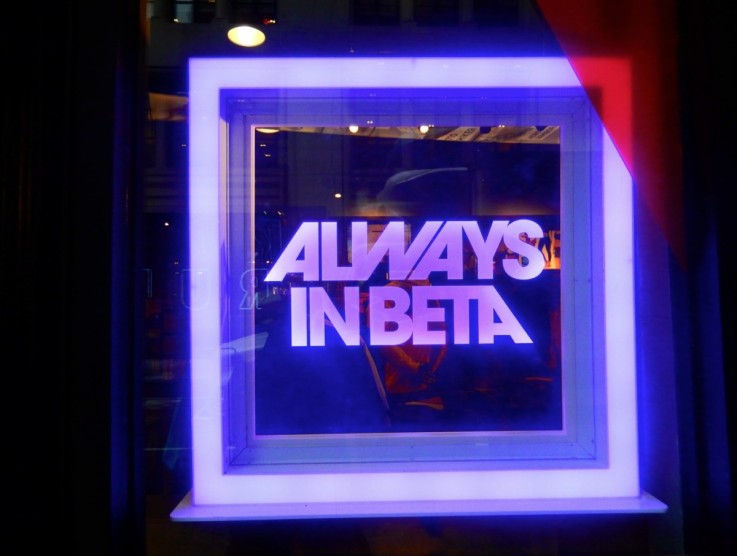
Trends in retail look different the world over. As we found out on a recent trip to New York, it’s a very different place to London. New York has an amazing array of personalised and customisable solutions. There’s also a real focus on building communities and offering event space. There are some fantastic high tech ideas and a great retail tech community. And some of the retail spaces have amazing architectural qualities.
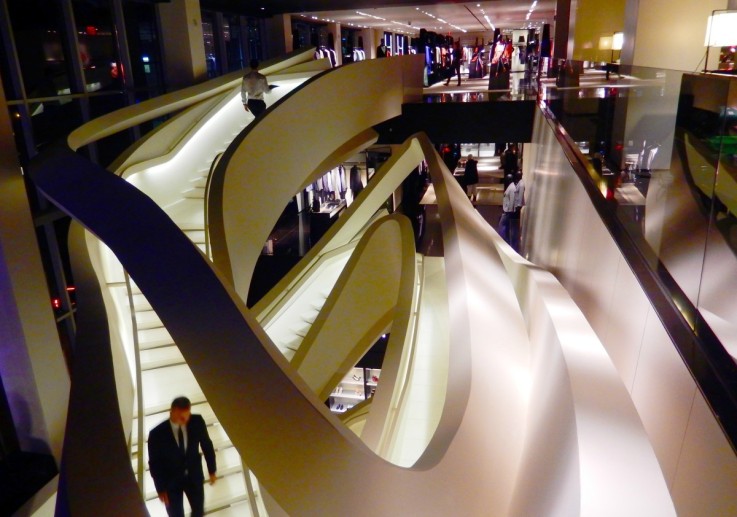
In the first of two posts we’ll take a closer look at some of these trends in action:
Retail technologies
Technology has enabled many retailers to rethink what their shop space can be. In the UK companies like Argos have long stocked huge numbers of products by keeping them out back. In New York we saw retailers also adopting this approach to free up the floor space for exciting customer experiences.
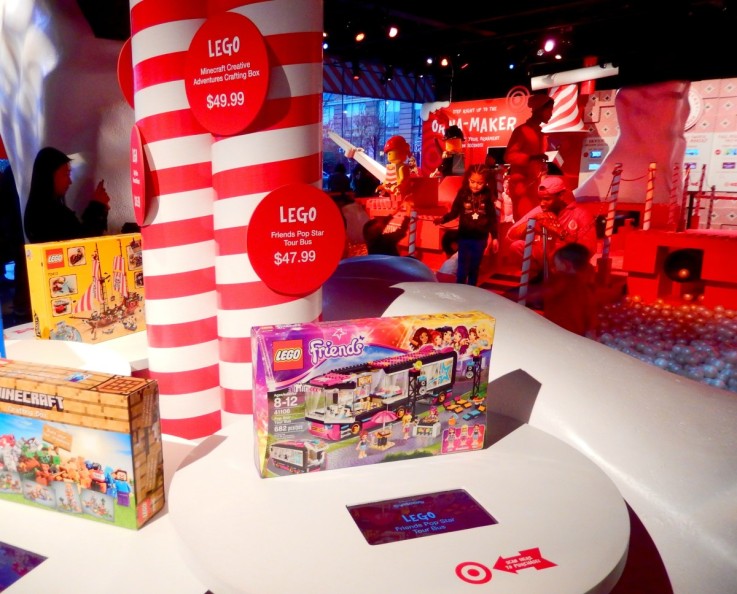
One store we visited showcased just one of each product on the shop floor. Each customer was given a lanyard with a chip in it. Each product had its own corresponding chip in front of it. If a customer wanted to buy a product they swiped their lanyard on the chip and it was added to their digital shopping list. This let customers move through the store buying what they wanted, but without the need to juggle carrying them all. At the till the lanyard was swiped to bring up the shopping list. The products were brought out from the back and the customer could pay for them.
The lanyard could also be linked to their email address making it easy for the retailer to follow up with the customer afterwards. It also let them interact with other parts of the store, such as photo opportunities. The photographer could scan their lanyard and email the picture straight to them.
While this may not be easily scalable in practice, it is inspiring when thinking about what retail needs to be in the future.
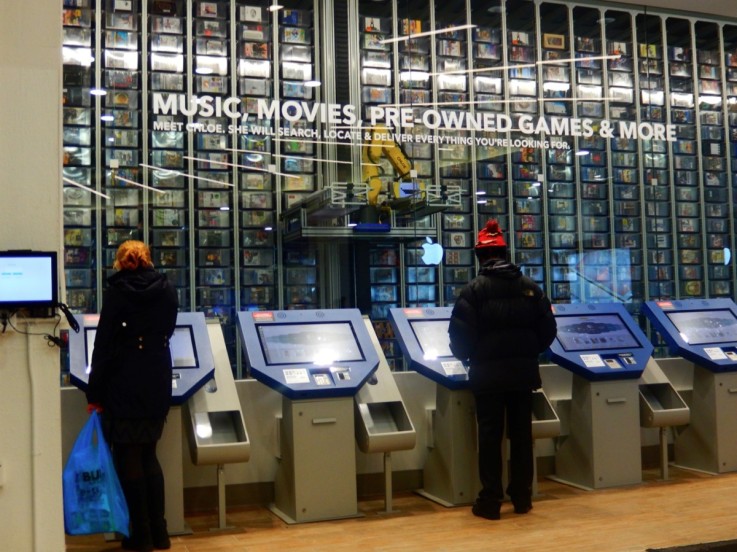
We also saw a retailer with a unique robotic retail system. The space is part of the main store, but also outside of it for access outside of the store’s main shopping hours. The products are racked up behind glass. Customers can choose the products they want using attached interactive screens and use their card to pay. A robotic arm moves up, down and across different racks of products to find the right one and delivers it to the customer through a chute.
[ult_buttons btn_title=”Find out more and book your New York trend tour here” btn_link=”url://www.insider-trends.com/#Contact” btn_align=”ubtn-left” btn_size=”ubtn-large” btn_title_color=”#000000″ btn_bg_color=”#f21800″ btn_hover=”ubtn-fade-bg” btn_anim_effect=”ulta-grow” icon_size=”32″ btn_icon_pos=”ubtn-sep-icon-at-left” btn_border_size=”1″ btn_radius=”3″ btn_shadow_size=”5″ tooltip_pos=”left” btn_font_style=”font-weight:bold;” btn_font_size=”16″]
Much like online shopping this lets customers buy products any time they want. Even outside of normal retail hours. But it also lets the customer have the product in their hand from the moment of sale, rather than waiting for delivery.
Plus, stores can pack far more stock into the same space than they could if they were using ordinary staff. It’s not difficult to imagine this approach being used by a parcel delivery company to let customers pick up parcels at any time.
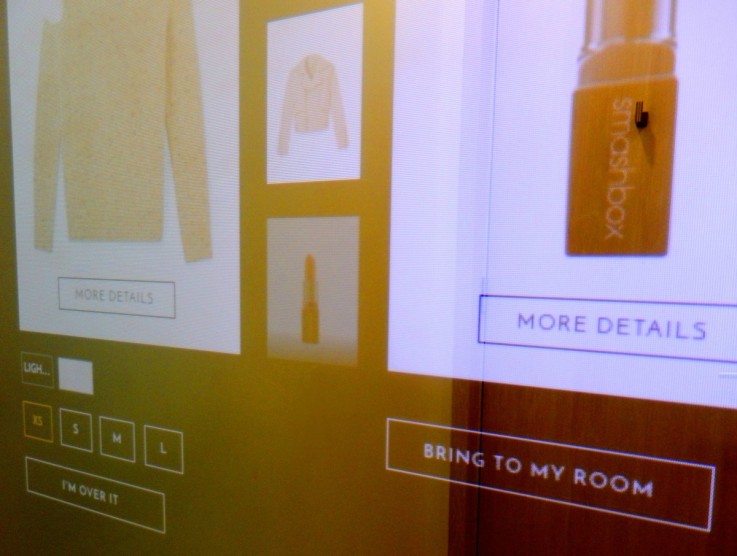
Another store has created one of the most sophisticated retail tech spaces out there. Each of their changing rooms is fitted with a digitally enabled mirror. Most of the items in the store have a chip in them, which the mirror recognises when taken into the fitting room. It then uses this to recommend other products that might go well with that item. This could be an item of clothing, accessory, shoes or make-up.
If the customer likes the look of one of the suggestions they can use the touchscreen in the mirror to select it and choose their size. An assistant will then bring it to the fitting room. The store also tracks its customers through data they provide. At entry to the store customers have the ability to order a drink. They have to enter their phone number into the system to receive a notification of when the drink is ready. The store uses the number to see who the customer is, if they have shopped with them before and what they’ve previously bought. This all adds up to a more personalised experience.
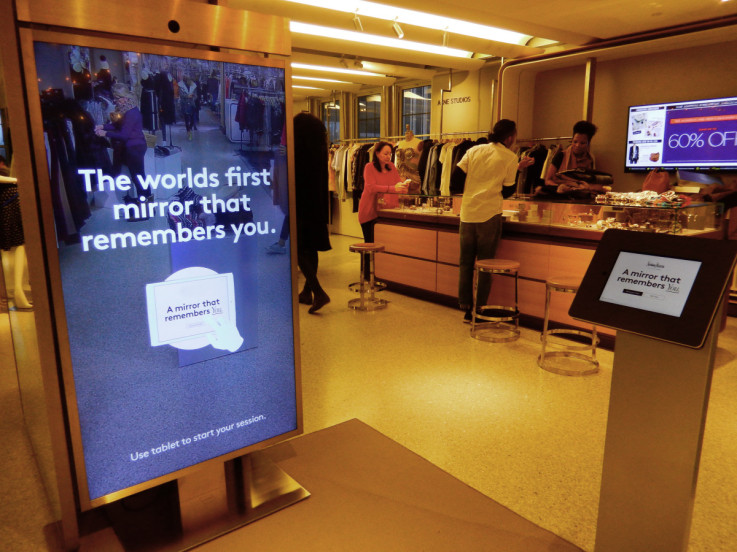
In another store we saw a different type of digital mirror technology. This actually records footage of customers as they look into the mirror. This means they can turn around and record themselves from all angles and then play it back. The mirror also lets customers compare footage of different outfits side by side.
Customers can enter their email address into a touchpad to receive their footage afterwards. They can then share it online with their peers. Facial recognition software enables the mirror to instantly load footage of a user’s past visits when they return to a store branch. The technology helps reposition shopping as a specialist and luxury experience.
[ult_buttons btn_title=”Find out more and book your New York trend tour here” btn_link=”url://www.insider-trends.com/#Contact” btn_align=”ubtn-left” btn_size=”ubtn-large” btn_title_color=”#000000″ btn_bg_color=”#f21800″ btn_hover=”ubtn-fade-bg” btn_anim_effect=”ulta-grow” icon_size=”32″ btn_icon_pos=”ubtn-sep-icon-at-left” btn_border_size=”1″ btn_radius=”3″ btn_shadow_size=”5″ tooltip_pos=”left” btn_font_style=”font-weight:bold;” btn_font_size=”16″]
Micro Retail – Customisation and Personalisation
Customisation and personalisation are big business in New York. We saw a high-end store that is manufacturing individual units of personalised products onsite. Another established brand recently launched a customisation system for its products.
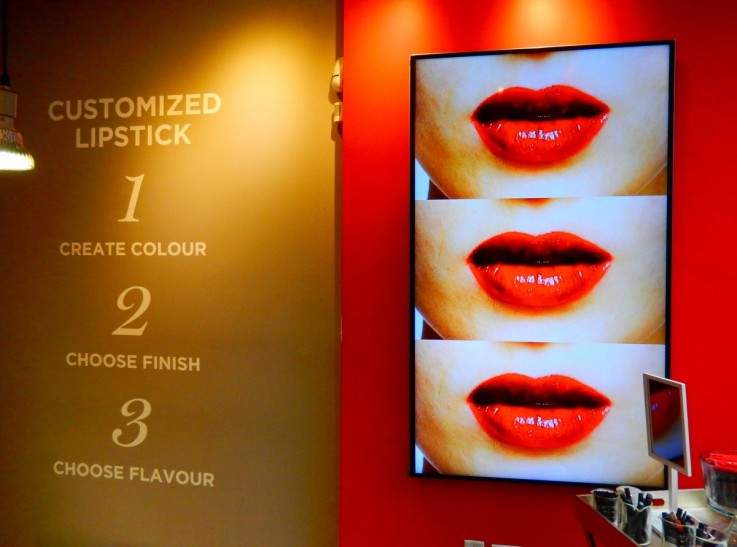
These spaces raise interesting questions around the types of personalisation brands will offer customers in the future. They also question how large retail spaces need to be in the future. Many brands are showing that you don’t need to have a lot of space to offer something special.
We saw a micro retailer offering customised make-up. The whole company operates out of one small space. Consultation, production and sales are all in the same room. This gives customers a view of the whole process of making their tailored product.
By having everything in one place the brand appears more accessible and authentic. Employees also enjoy first-hand experience of what customers really want. And who the target audience are.
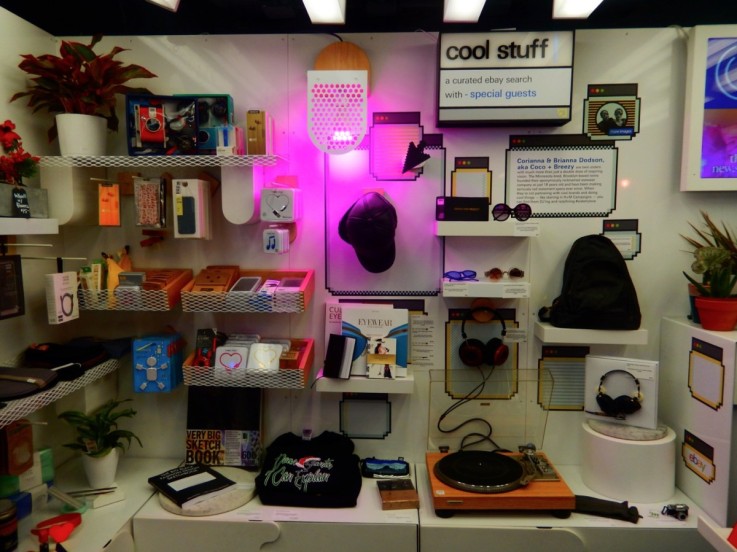
Another small-scale store is innovating through an accompanying app. The store is in a busy commuter hub, which makes shopping convenient for its target customers. It carries an array of essential and cool products. The store is accompanied by an app-based membership programme.
[ult_buttons btn_title=”Find out more and book your New York trend tour here” btn_link=”url://www.insider-trends.com/#Contact” btn_align=”ubtn-left” btn_size=”ubtn-large” btn_title_color=”#000000″ btn_bg_color=”#f21800″ btn_hover=”ubtn-fade-bg” btn_anim_effect=”ulta-grow” icon_size=”32″ btn_icon_pos=”ubtn-sep-icon-at-left” btn_border_size=”1″ btn_radius=”3″ btn_shadow_size=”5″ tooltip_pos=”left” btn_font_style=”font-weight:bold;” btn_font_size=”16″]
Customers can join for free by downloading the app. This gives them lower prices on in-store products, plus articles, playlists and product recommendations. The app will also let customers browse and pre-order items to collect in store the next day. This will help measure interest in different products. And in turn this can impact stocking decisions.
As the stores of New York show, technology and customisation have opened up a tonne of exciting new retail opportunities. In part two we’ll look at how the city is also tackling experience and engagement, community and new retail models.
If you want to see these stores and meet some of New York’s exciting innovators, get in touch to book your New York trend tour.
Keep on reading with part two of the series.


